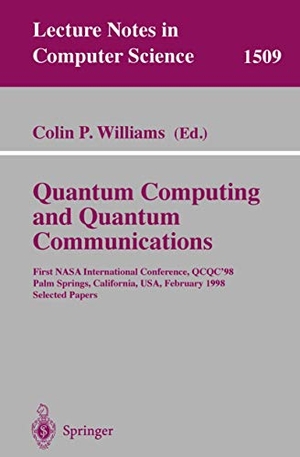
Quantum Computing and Quantum Communications
- Springer Berlin Heidelberg
- 1999
- Taschenbuch
- 500 Seiten
- ISBN 9783540655145
? Colin P. Williams Jet Propulsion Laboratory, California Institute of Technology, 4800 Oak Grove Drive, Pasadena, CA 91109-8099, email: Colin. P. Williams@jpl. nasa. gov Over the past half century computers have gone from being the room-sized servants of a privileged few to the totable companions of business travellers, schoolchildren,andjust aboutanyonewho canpoint andclick a mouse. Inpart, this transformation was made possible by the dramatic miniaturization in the basic components of a computer. This trend was quantied in 1964 by Gordon Moore, one of the founders of Intel, who noticed that the amount of information that could be stored on a given amount of silicon doubled roughly every
Mehr
Weniger
zzgl. Versand
in Kürze